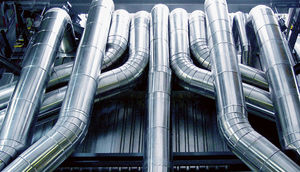
Combined heat and power plant

Add to favorites
Compare this product
Description
Energy from waste in the form of combined heat and power involves cogenerating electric power and heat. The process is ideal where the available infrastructure means it makes sense to use heat and simultaneously generate electricity. While extracting heat reduces the maximum amount of electricity it’s possible to generate, it significantly increases the overall energy efficiency of the plant. Depending on the situation on site, the plant can feed heat into a district heat network or use it to generate process steam or hot water at higher temperatures, with the mass flow rate, temperature and pressure requirements of those using the heat met dependably at all times. If heat is only required in the winter months, the flexible design of these waste treatment plants allows heat generation to be reduced and power generation to be increased accordingly. At maximum heat extraction, such plants run at a net efficiency of between 70% and 90%, and if additional heat exchange systems are used in the flue gas treatment unit, this figure can even be boosted to 99%. Thanks to the highly modular connectivity of the system overall, in such cases the EfW plant can be optimised even further, for example by using the additional energy recovered to preheat the primary air for the combustion chamber.
Catalogs
No catalogs are available for this product.
See all of Hitachi Zosen Inova AG ‘s catalogs*Prices are pre-tax. They exclude delivery charges and customs duties and do not include additional charges for installation or activation options. Prices are indicative only and may vary by country, with changes to the cost of raw materials and exchange rates.




